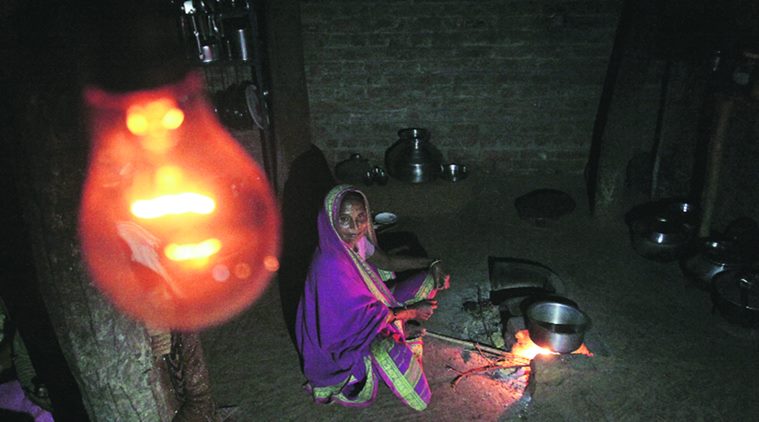In the FY18 as many as 50.4 lakh BPL households were provided free electricity connections under various government schemes, power minister RK Singh informed the Rajya Sabha on Tuesday. As expected most of the connections were provided in the north Indian states like Uttar Pradesh, Bihar, Madhya Pradesh. 12.9 lakh, 10.5 lakh and 8.5 lakh connections were provided in UP, Bihar, MP respectively. This is the second largest instance of free BPL power connection dispensed in the last ten years, trailing behind the 58.8 lakh released in FY11. Cumulatively, 3.1 crore BPL households have been provided free power connections till June 2018. Though the connections to BPL families are free, the Central government would not provide any financial assistance to BPL households for electricity bills. To save power distribution companies (discoms) from losses, the government plans to shift completely to pre-paid meters. To further safeguard the discoms, the ministry has also proposed that electricity regulators should not take into account the subsidy component disbursed by the states while calculating tariffs.
India is now the third largest producer of power in the world with a total generation of 1,423 TWh (terawatt hour) in the year 2016, only behind China (6,015 TWh) and the United States (4,327 TWh). But the problem was, convincing the people living in villages to use electricity and pay for it. Some other problems were that the distribution was inefficient and people were not willing to pay high prices. Many households were using inefficient non-LED bulbs which consume more power because they payed fixed amount of bill for whatever units they consume. Since the Modi government came to power it has started making a turnaround through innovative schemes. To make power distribution efficient and end the vicious cycle of debt of power distribution companies the government launched Ujwal Discom Assurance Yojana or UDAY scheme. Under this scheme discoms will be able to transfer 75 percent of their debt to the state government. UDAY seeks to empower loss making Discoms to break even in two to three years by helping the Discoms in improving their operational efficiencies. These would include compulsory smart metering, upgrading transformers, popularising LED bulbs, reducing the cost of power by increasing the supply of cheaper domestic coal, liberal coal swaps from inefficient to efficient plants, supply of washed and crushed coal and faster completion of transmission lines.
April 28, 2018 was a momentous day in India’s history. On this day, PM Modi announced that the goal of 100% electrification of India has been achieved, even before the deadline. Leisang village in Manipur became the last village to be added to the national power grid under the Deen Dayal Upadhyay Gram Jyoti Yojana (DDUGJY). As per the Rural Electrical Corporation (REC), the easily accessible areas are given priority for electrification as the cost and efforts associated with the projects are significantly lower. Due to this reason, the rate of electrification during the UPA regime was high in the initial years but fell dramatically as the electrification program reached to more difficult terrains. In fact, during the fiscal year of 2013-14, just slightly more than a thousand villages were electrified. The fall in the rate of electrification is demonstrative of the fact that as the cost and efforts became more intensive, the UPA regime adopted a sluggish approach towards rural electrification. This is clearly not the case with the NDA regime. In light of this, NDA government’s electrification of 7501 villages during the fiscal year of 2015-16 deserves much appreciation.
India has made great strides in energy-sector under Modi government, all the villages of India now have access to electricity and its renewable energy sector has attracted investment of 42 billion dollars in the last four years. According to Ministry of Renewable Energy “Globally, India stands 4th in wind power, 5th in renewable power and 6th in solar power installed capacity. Solar energy capacity has increased by 8 times from 2.63 GW in 2014 to 22 GW. Wind energy capacity increased by 1.6 times from 21 GW in 2014 to 34 GW.” The per capita energy consumption in India is 10 times lower than that of United States. Energy consumption is one of the indicators for economic development. Therefore, it is very important that per capita consumption grows exponentially for the economic growth of the country.
